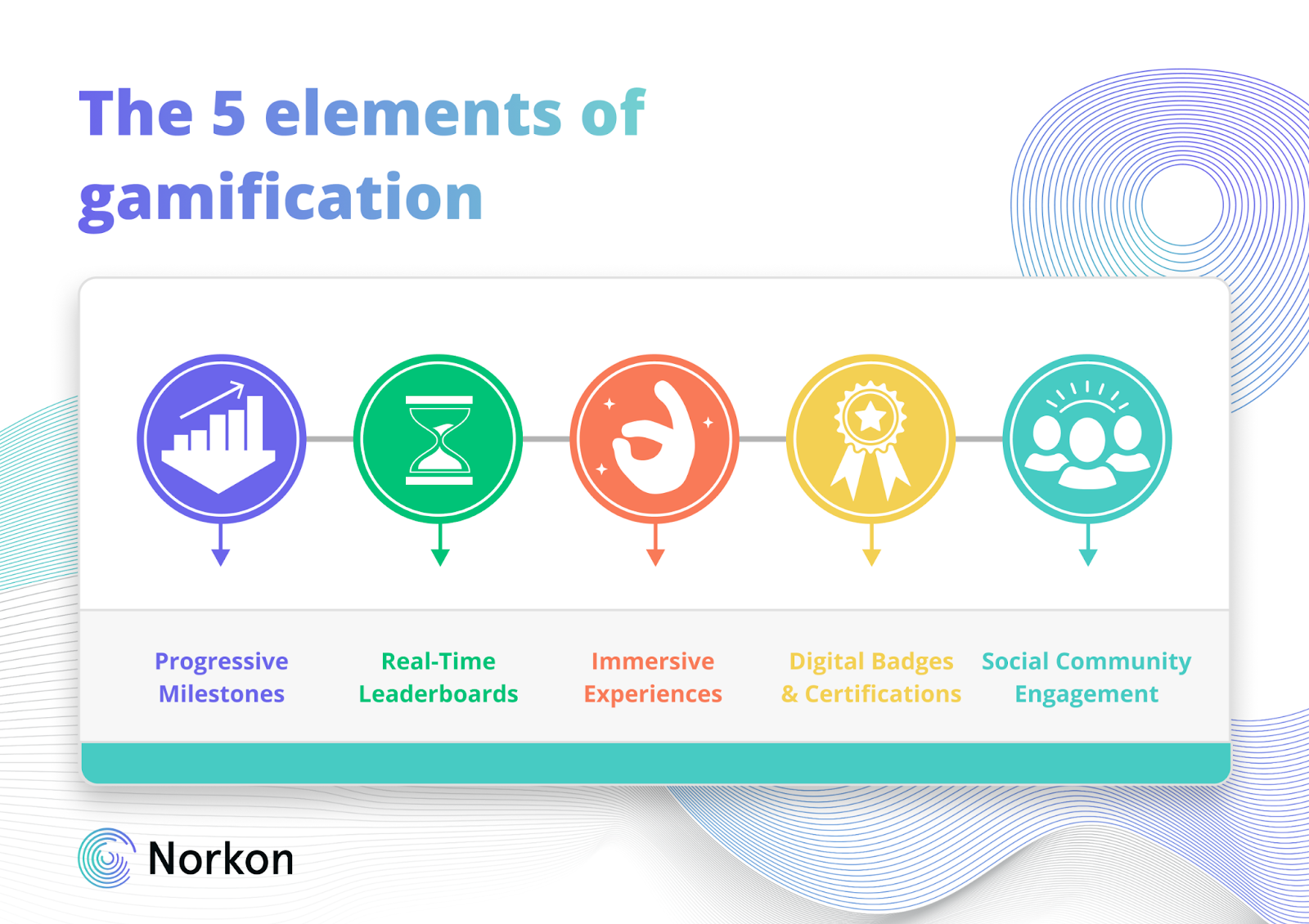In recent years, the concept of gamification in education has gained significant traction, revolutionizing the way students engage with learning materials. By integrating game elements such as points, badges, and leaderboards into educational settings, educators can create a more dynamic and interactive learning environment. This approach not only enhances student motivation but also fosters a deeper understanding of the subject matter. In this article, we will delve into the various ways gamification can transform traditional educational practices and improve learning outcomes.
As you continue reading, you will discover the key benefits of gamification, including increased student engagement, improved retention rates, and the development of critical thinking skills. We will explore real-world examples of successful gamification strategies implemented in classrooms and online learning platforms. Additionally, we will provide practical tips for educators looking to incorporate game mechanics into their teaching methods, ensuring that you have the tools necessary to create an engaging learning experience.
Whether you are an educator, a student, or simply curious about the intersection of gaming and education, this article will equip you with valuable insights into the power of gamification. Join us on this journey to uncover how game elements can not only make learning more enjoyable but also significantly enhance educational outcomes. Read on to learn how you can harness the potential of gamification in your own educational endeavors!
Gamification in education has emerged as a powerful tool to enhance student engagement and motivation. By integrating game elements into the learning process, educators can create a more interactive and enjoyable experience for students. This article explores various aspects of gamification in education, highlighting how game elements can significantly improve learning outcomes.
The Psychology Behind Gamification
The effectiveness of gamification in education is deeply rooted in psychological principles. Game mechanics such as rewards, challenges, and competition tap into intrinsic and extrinsic motivation. When students are rewarded for their achievements, they are more likely to engage with the material and persist through challenges. This psychological engagement fosters a growth mindset, encouraging learners to embrace difficulties as opportunities for improvement.
Moreover, the use of game elements can create a sense of autonomy and competence among students. When learners feel they have control over their learning journey, they are more likely to take ownership of their education. This empowerment can lead to increased self-efficacy, which is crucial for academic success.
Enhancing Engagement Through Game Mechanics
One of the primary benefits of gamification is its ability to enhance student engagement. Game mechanics such as points, badges, and leaderboards create a competitive environment that motivates students to participate actively. These elements not only make learning more enjoyable but also encourage collaboration among peers.
For instance, incorporating a points system can incentivize students to complete assignments and participate in discussions. Badges can serve as tangible recognition of achievements, while leaderboards can foster a healthy sense of competition. This gamified approach transforms traditional learning into an interactive experience, making it more appealing to students.
Personalized Learning Experiences
Gamification allows for personalized learning experiences tailored to individual student needs. By utilizing adaptive learning technologies, educators can create customized pathways that cater to different learning styles and paces. This personalization ensures that all students can progress at their own speed, leading to better retention of knowledge.
Additionally, gamified platforms often provide instant feedback, allowing students to understand their strengths and weaknesses. This immediate response helps learners adjust their strategies and focus on areas that require improvement, ultimately enhancing their overall learning experience.
Fostering Collaboration and Teamwork
Incorporating gamification into education can significantly foster collaboration and teamwork among students. Many gamified learning environments encourage group activities and challenges that require students to work together to achieve common goals. This collaborative approach not only enhances social skills but also promotes a sense of community within the classroom.
Through team-based challenges, students learn to communicate effectively, share ideas, and support one another. This collaborative spirit can lead to deeper learning experiences, as students benefit from diverse perspectives and collective problem-solving efforts.
Measuring Progress and Achievement
Gamification provides educators with innovative ways to measure student progress and achievement. Traditional assessment methods often fail to capture the full scope of a student’s abilities. However, gamified systems can track various metrics, such as points earned, levels completed, and badges achieved, offering a more comprehensive view of student performance.
This data-driven approach allows educators to identify trends and patterns in student learning, enabling them to make informed decisions about instructional strategies. By understanding how students engage with the material, teachers can tailor their approaches to better meet the needs of their learners.
Overcoming Learning Barriers
Gamification can play a crucial role in overcoming learning barriers faced by students. Many learners struggle with traditional educational methods, leading to disengagement and frustration. By introducing game elements, educators can create a more accessible and enjoyable learning environment that caters to diverse needs.
For example, students who may feel intimidated by complex subjects can benefit from gamified learning experiences that break down content into manageable tasks. This gradual approach helps build confidence and encourages students to tackle challenging material without fear of failure.
The Role of Technology in Gamified Learning
Technology is a key enabler of gamification in education. With the rise of digital platforms and tools, educators can easily integrate game elements into their teaching practices. Online learning environments, mobile applications, and interactive software provide opportunities for immersive and engaging learning experiences.
These technological advancements allow for real-time feedback, progress tracking, and collaborative features that enhance the overall learning experience. As technology continues to evolve, the potential for gamification in education will only expand, offering new ways to engage and motivate students.
Future Trends in Gamification in Education
The future of gamification in education looks promising, with emerging trends that are set to reshape the learning landscape. As educators increasingly recognize the benefits of game elements, we can expect to see more innovative approaches to teaching and learning. Trends such as virtual reality (VR) and augmented reality (AR) are poised to take gamified learning to new heights, providing immersive experiences that enhance understanding and retention.
Furthermore, the integration of artificial intelligence (AI) in gamified platforms will enable personalized learning experiences that adapt to individual student needs. As these technologies continue to develop, the potential for gamification to transform education will only grow, making learning more engaging and effective for future generations.
Gamification refers to the integration of game elements in non-game contexts, such as education, to enhance engagement and motivation. This approach leverages the principles of game design to create a more interactive and enjoyable learning experience.
| Game Element | Description | Impact on Learning |
|---|---|---|
| Points | Points are awarded for completing tasks or achieving goals. | Encourages competition and motivates students to engage more with the material. |
| Badges | Badges are visual representations of achievements. | Provides recognition and a sense of accomplishment, boosting self-esteem. |
| Leaderboards | Leaderboards display rankings based on performance. | Fosters a competitive spirit and encourages students to improve their performance. |
| Challenges | Challenges are tasks that require effort and skill to complete. | Promotes critical thinking and problem-solving skills through engaging activities. |
| Levels | Levels represent stages of progress in a game. | Allows students to experience a sense of progression, motivating them to advance. |
| Feedback | Immediate feedback is provided on performance. | Helps students understand their strengths and areas for improvement, enhancing learning outcomes. |
Conclusion
Incorporating gamification in education can significantly enhance student engagement, motivation, and learning outcomes. By utilizing game elements such as points, badges, and challenges, educators can create a dynamic learning environment that encourages students to actively participate and strive for success.



